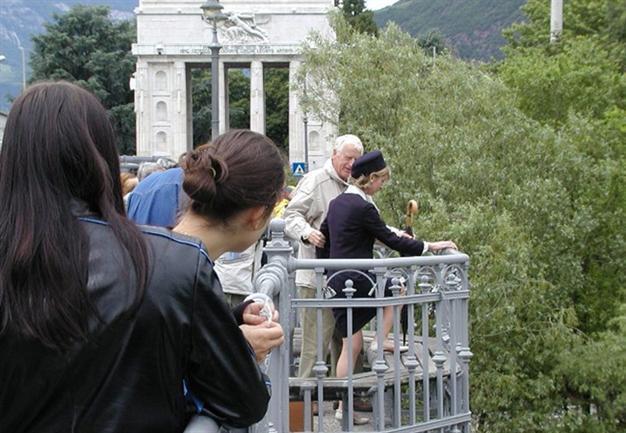Exhibition questioning viewer's position to violence
ISTANBUL- Hürriyet Daily News

The works at the exhibtion are equally rich and diverse in material and the exhibition makes the most of multimedia presentation. The selection includes old works as well as newly commissioned pieces.
Akbank Sanat’s latest mixed exhibition “
Aftermath” is an uncanny take on the onlooker’s relationship to crime and violence. Curated by
Başak Şenova, the exhibition presents the concept of vision in its diversity, playing on its different forms in a range from the most solid, as in the case of a crime scene, to its most vague, as in the dreamy recollection of a memory.
The exhibition finds its ultimate meaning in the audiences’ response, as they attempt to connect the dots between each individual work. The works included all highlight different social or political issues as they delve into the nature of violence, some attempting to portray multiple viewpoints of the matter at hand. The exhibition urges the viewer to question his position and his recollection or oblivion before the particular case represented by each individual work. The aftermath is to be constructed by the viewer.
The works are equally rich and diverse in material and the exhibition makes the most of multimedia presentation. The selection includes old works as well as newly commissioned pieces. Şenova said in an interview with Hürriyet Daily News that she has long been working with the idea of memory and the common denominators of plots that affect the reconstruction of memory.
“We have not directly translated the exhibition’s title into English, but chose to use ‘Aftermath’ because it connotes bad consequences and side effects. By playing on this word I wanted to make an allusion to the idea that facts and their understanding by different persons never completely match.”
Şenova said that in designing the exhibition space she chose to build small display cells for each work rather than separating them with walls. “This was necessitated by the kind of atmosphere the participating artists wanted to create with their works. We collaborated with them in designing the display area. The viewers should expect an exhibition that spreads throughout the whole exhibition venue.”
The exhibit features works by Adel Abidin, Almagul Menlibaeva, Ayman Yossri Daydban, Bahar Behbahani, Ceren Oykut, Constantinos Taliotis, İpek Duben, Özgül Ezgin, Rheim Alkadhi and Yane Calovski.
“Aftermath” is accompanied by a book, edited by Şenova, which functions as a critical guide to the exhibition. The book looks at the artwork from a wide range of perspectives, with contributions from writers, critics, and curators such as Andreas Vrahimis, Cathy Bryd, Ece Pazarbaşı, Doris Chon, Lewis Johnson, Maia Damianovic, Rijin Sahakian, Robert Kluijver and Zehra Şonya. “Aftermath” runs through May 17.
Exhibition's highlight: Yane CalovskiExhibition's highlight: Yane Calovski Yane Calovski's work, “Tommy Rot: The Sublime Violence of Truth,” is the highlight of the show. The work is the result of a 10-year effort which started when the artist was commissioned to make a public work project by Ar-ge Kunst in Bolzano in northern Italy in 2002.
The work features a constant transformation of truth and fiction into each other by use of multimedia as it attempts to write the unwritten story of a group called the Freedom Fighters who lived in Bolzano in the late 1950s. The work's title is an allusion to Thomas More's “Utopia.”
“The Freedom Fighters were engaging in public vandalism to express their demands of freedom for their region. What I do in this work is to bring back one of them to life through an actress. She is to play the girlfriend of one of these men. She is instructed to do nothing but stand and stare in public sites, while I and my team are documenting the public reaction to her,” Calovski told the Hürriyet Daily News.
A fundamental part of the work is the media reports about the chaos the actress triggers for which the artist collaborated with publications. “Those media reports are real. We informed them about the actress's whereabouts and we gave them the pictures. The video was for TV channels. We did not give them a text. They wrote their own story out of the photograph image and published it,” Calovski said.
Textuality is an integral part of Calovki's work, who defines himself as a story teller. “But I do not trust the linear narrative, so in each and every work I am getting myself into trouble on purpose to come up with a story that will surprise myself,” he said.
